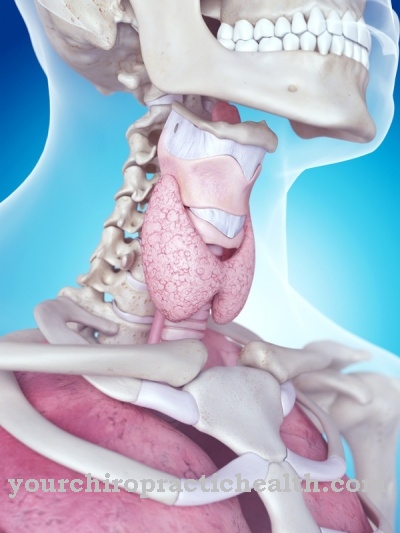With a Urine sample By testing for specific substances, numerous diseases, but also drug use and pregnancies, can be detected. Urinalysis is an important area of laboratory medicine, but rapid tests are also becoming increasingly widespread: Not only for pregnancy checks, but also for initial tests for diseases. Bacteria and the concentration of red blood cells, sugar and protein in the urine are analyzed.
What is a urine sample?

The urine sample refers to the delivery of urine (from the old German Haran; "the excreted") for subsequent diagnosis. In humans, as in all mammals, urine is secreted through the urinary tract. The liquid contains water, various mineral salts and end products of protein metabolism. Their composition varies not only according to the age and sex of the patient, but also according to the amount and type of food consumed.
In addition to these naturally occurring constituents in the urine, pathological urinary constituents can also be identified by analyzing the urine in diseases, which then allow conclusions to be drawn about these diseases. The amount of urine required for diagnosis varies according to the objective of the investigation.
Function, effect & goals
Urine tests are used to gain knowledge about possible illnesses, drug use, doping or pregnancy. Even if the rapid tests available in pharmacies are now well advanced: their results only provide clues. Complaints and the results of self-performed rapid tests should therefore be discussed with a doctor.
Doctors also regularly carry out rapid tests in order to be able to make an initial diagnosis. The rapid test is one of the routine examinations in general practitioners' practices and is used, for example, for preliminary examinations during pregnancy, before operations, but also for pain in the abdomen, abdomen and back. Other reasons for urine tests are pain when urinating or if there is an accumulation of blood in the urine. It is also possible to determine the sugar content in the urine in diabetes.
If the test strips are used, they can show the concentration of blood, sugar or glucose or nitrite in the urine through their discoloration. Nitrite is a breakdown product of bacteria and indicates an infection of the urinary tract. Gucosis in the urine can occur during pregnancy or in some types of cancer. As a rule, however, glucose indicates the diabetes mellitus disease. The detection of ketones is also relevant for diabetics: These do not normally appear in the urine and can be both a result of intensive fasting and an indication of an unbalanced metabolism in diabetics.
If red blood cells are found in the urine, it is likely that the urinary tract is inflamed. In very rare cases, there may also be a tumor, such as kidney or bladder cancer. White blood cells in the urine suggest a bladder or kidney infection. Protein should hardly be found in the urine of healthy people or not at all. An increased protein concentration therefore also indicates a disease of the kidney.
Last but not least, the examination of the pH value also enables conclusions to be drawn about urinary tract infections or diabetes. Urine usually has a pH between 5 and 6. He is slightly angry. If the pH rises, i.e. if the urine is less acidic, the urinary tract can be infected. If the pH value drops, this can indicate diabetes. Urine gets its yellowish color from bilirubin, the breakdown product of the blood pigment hemoglobin. If the urine is very yellow in color, this may indicate liver disease. In most cases, however, the color of the urine will vary based on diet and fluid intake.
Only a subsequent microscopic laboratory examination of the urine can provide reliable information. It is much more precise, but also involves more effort and costs and takes accordingly longer.
You can find your medication here
➔ Medicines for bladder and urinary tract healthRisks, side effects & dangers
Since the urine sample is only an examination of the urine that has to be excreted anyway, there are no risks or dangers for the patient. There are also no side effects to be warned about, as this is not an intervention in the body. Nevertheless, there are special features that should be observed.
In order to actually enable the examination of the urine, the genital area should be cleaned with water beforehand in order to avoid subsequent contamination of the urine with bacteria and other substances. For this very reason, soap should be avoided when cleaning immediately before.
Although test strips are now also available in pharmacies for diseases, these are no substitute for a urine test at the doctor's. Storing or touching the test can also cause bacteria to get onto the test via the fingers, which then falsify the test image.
For a urine test, it is also common, as long as there are no instructions to the contrary, to only use mid-stream urine. This means that the first portion of the urine should not be used, only the middle amount should be placed in the container. Then the remaining urine should be withheld and not end up in the container. This is due to the fact that the urine could also be contaminated with bacteria initially, which do not allow any conclusions to be drawn about actual diseases. Many doctors do not point this out separately. It is therefore helpful to note this or, if necessary, to ask briefly.













.jpg)

.jpg)
.jpg)











.jpg)